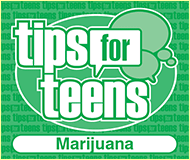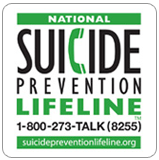Synar Program Factsheet
Description and Background
Overview: In July 1992, Congress enacted the Alcohol, Drug Abuse, and Mental Health Administration Reorganization Act (P.L. 102-321), which includes an amendment (section 1926) aimed at decreasing youth access to tobacco. This amendment, named for its sponsor, Congressman Mike Synar of Oklahoma, requires States (i.e., all States, the District of Columbia, and the 8 U.S. Territories) to enact and enforce laws prohibiting the sale or distribution of tobacco products to individuals under the age of 18.
The Synar program is the set of actions put in place by States, with the support of the Federal Government, to implement the requirements of the Synar Amendment. The Amendment was developed in the context of a growing body of evidence about the health problems related to tobacco use by youth, as well as evidence about the ease with which youth could purchase tobacco products through retail sources. The Synar program is a critical component of the success of youth tobacco use prevention efforts.
Synar Legislation: The Synar legislation requires States to do the following: enact laws prohibiting the sale and distribution of tobacco products to minors; enforce such laws in a manner that can reasonably be expected to reduce the availability of tobacco products to youth under the age of 18; conduct random, unannounced inspections of tobacco outlets; and report these annual findings to the Secretary of the U.S. Department of Health and Human Services.
Because it plays a lead Federal role in substance abuse prevention, SAMHSA was charged with implementing the Synar Amendment. In January 1996, SAMHSA issued the synar Regulation to provide guidance to the States. The regulation requires that States:
- Have in effect a law prohibiting any manufacturer, retailer, or distributor of tobacco products from selling or distributing such products to any individual younger than age 18;
- Enforce this law;
- Conduct annual, unannounced inspections in a way that provide a valid probability sample of tobacco sales outlets accessible to minors;
- Negotiate interim targets and a date to achieve a noncompliance rate of no more than 20 percent (SAMHSA required that each State reduce its retailer violation rate (RVR) to 20 percent or less by FFY 2003); and
- Submit an annual report detailing State activities to enforce its law.
Synar Programmatic Requirements: SAMHSA/CSAP is charged with overseeing States’ implementation of the Synar requirements and provides technical assistance to States on both the Synar requirements and youth tobacco access issues in general.
Since the inception of the Synar program, SAMHSA/CSAP has worked with States to assist them in complying with and attaining the goals of the Synar Amendment and has issued programmatic requirements and guidance documents to assist States in their efforts.
- Develop a sampling frame that includes both over the counter and vending machine locations accessible to youth;
- Ensure that their sampling frame includes, at a minimum, 80 percent of the tobacco outlets in the State (CSAP requires States that use a list frame to conduct and report the results of a coverage study designed to assess the completeness of the sampling frame);
- Design a sampling methodology and implementation plan that are based on sound survey sampling methodology;
- Sample a large enough number of outlets to meet SAMHSA’s precision requirement (one-sided 95% confidence interval);
- Obtain a completion rate of 90 percent or better;
- Record the actual steps of the survey process in the field and keep records of all sources of sample attrition in the field; and
- Weight the results of the Synar survey to account for unequal probabilities of selection, differences in percentages of eligible outlets between strata or clusters, and other deviations from the intended design.
Penalties for Noncompliance: In addition to setting targets for State, the Synar Amendment established penalties for noncompliance. The penalty for a State is loss of up to 40 percent of its Substance Abuse Prevention and Treatment (SAPT) Block Grant funds. Since these funds account for a large percentage of all State expenditures for substance abuser prevention and treatment, imposition of this penalty could present a sever problem for a State. From FFY 1997 to FFY 2005, there were 18 instances involving 14 States in which that penalty could have been imposed.
in lieu of this penalty, in every year since 2000, Congress has provided an alternative penalty (Section 214/Section 218/Section 213/Section 212) mechanism by which a State can avoid the 40% reduction in its SAPT Block Grant if the State stipulates that it will spend its own funds to improve compliance with the law. Specifically, under the alternative penalty, a State that fails to meet Synar requirements can avoid the 40-percent penalty against its SAPT Block Grant by taking the following steps:
- Committing additional State funds to ensure compliance with youth tobacco access laws in an amount equal to 1 percent of its current fiscal year’s Block Grant for each percentage point by which the State failed to meet the retailer violation target rate for the previous fiscal year;
- Certifying that these additional State funds will be used to supplement and not supplant funds used for tobacco prevention programs and compliance activities in the fiscal year preceding the fiscal year to which the section applies;
- Providing reports to the Secretary of Health and Human Services on all State resources spent in the previous fiscal year and obligated in the current fiscal year for tobacco prevention and compliance activities by program activity.
The alternative penalty also stipulates that SAPT BG funds can not be withheld from a U.S. Territory that receives less than $1,000,000 in Substance Abuse Prevention and Treatment (SAPT) Block Grant funds for failing to meet the Synar requirements.
Congress has provided the alternative penalty option as part of the Consolidated Appropriations Act each year since 2000 (the alternative penalty option in the 2000 Consolidated Appropriations Act referred to States out of compliance in FFY 1999, the alternative penalty option in the 2001 Consolidated Appropriations Act was determined to refer to States out of compliance in both FFY 2000 and FFY 2001 and thereafter, the year of the Appropriations Act and the year of the penalty option matched.)
States took the opportunity afforded by these additional expenditures to strengthen and improve their Synar programs. The alternative penalty approach seems to have been more effective in creating systems that reduce youth access to tobacco than a more strictly punitive reduction in funds would have been. As such, it is an example of a Federal-State partnership for accomplishing the intended goals of the Synar program that has informed the implementation of this nationwide effort.
Funding for Synar Implementation: Although there is no dedicated Federal source of funding set aside for States to use in implementing the Synar requirements, States may expend funds from the primary prevention setaside of their SAPT BG for carrying out the administrative aspects of the requirements, such as the development of the sample design and the conducting of the inspections. SAPT BG funds may not be used to fund enforcement of youth tobacco access laws.
EVALUATION RESULTSThe Synar program has been successful in reducing youth access to tobacco through retail sources. While the national weighted average retailer violation rate for the 50 States and the District of Columbia (weighted by State population) was 40.1 percent in FFY 1997, the rate has steadily fallen since then, to 10.5 percent in FFY 2007 and 9.9 percent in FFY 2008. Since FFY 2006, all 50 States and the District of Columbia have been in compliance with the Synar requirements.
The Synar program has also contributed to a decline in the percentage of youth smokers who report retail sources as their usual source of tobacco products. Specifically, according to the Youth Risk Behavior Survey (YRBS), in 1995, 38.7 percent of students under the age of 18 who were current smokers reported that they usually got their own cigarettes by buying them in a store or gas station. In 2007, this percentage had dropped to 16.0 percent.
At the same time, tobacco use among youth has been declining. According to YRBS, the percentage of students reporting current cigarette use dropped from 36.4 percent in 1997 to 20.0 percent in 2007. Obviously, this drop is not attributable to Synar alone, but the Synar requirements have contributed to a culture change in which youth tobacco use is discouraged.
RECENT ACCOMPLISHMENTS
States have made considerable progress in attaining the goals of the Synar legislation. In addition to the consistent decline in the national weighted average retailer violation rate, States have implemented a variety of interrelated policies and programs designed to limit youth access to tobacco products through retail sources. One component of the State’s response has been legislative action. In addition to legislation banning sales to persons under age 18, States have also enacted a variety of additional legislation which supports a reduction in youth access to tobacco products. This includes legislation that:
- Restricts tobacco vending machines;
- Requires “age of sale” signs;
- Creates a graduated system of civil or criminal penalties for outlet owners and/or clerks;
- Requires State-wide merchant education;
- Specifies State enforcement authority;
- Requires random, unannounced inspections;
- Requires licensure of tobacco retailers;
- Allows minors under the age of 18 to conduct compliance checks; and
- Provides immunity to youth who conduct compliance checks.
RECENT ACCOMPLISHMENTS
States have made considerable progress in attaining the goals of the Synar legislation. In addition to the consistent decline in the national weighted average retailer violation rate, States have implemented a variety of interrelated policies and programs designed to limit youth access to tobacco products through retail sources. One component of the State’s response has been legislative action. In addition to legislation banning sales to persons under age 18, States have also enacted a variety of additional legislation which supports a reduction in youth access to tobacco products. This includes legislation that:
- Restricts tobacco vending machines;
- Requires “age of sale” signs;
- Creates a graduated system of civil or criminal penalties for outlet owners and/or clerks;
- Requires State-wide merchant education;
- Specifies State enforcement authority;
- Requires random, unannounced inspections;
- Requires licensure of tobacco retailers;
- Allows minors under the age of 18 to conduct compliance checks; and
- Provides immunity to youth who conduct compliance checks.
FOR FURTHER INFORMATION
For more information regarding the Synar regulation, please refer to “Tobacco Regulation for Substance Abuse Prevention and Treatment Block Grant – Final Rule” at http://tie.samhsa.gov/Documents/pdf/Title%2045,%20Part%2096,%20Sec%2096.130.pdf [PDF, 12 KB]
If you have additional questions, please contact:
Susan Marsiglia Gray, MPH
National Synar Program Coordinator
Division of State Programs
Center for Substance Abuse Prevention
Substance Abuse and Mental Health Services Administration
1 Choke Cherry Road, Room 4-1041
Rockville, MD 20857
(240) 276-2568
Susan.Marsiglia@samhsa.hhs.gov
Last updated: 1/14/2011

If effective prevention programs were implemented nationwide, substance abuse initiation would decline for 1.5 million youth and be delayed for 2 years on average, reducing subsequent problems later in life.
SOURCE: Substance Abuse Prevention Dollars & Cents: A Cost-Benefit Analysis




